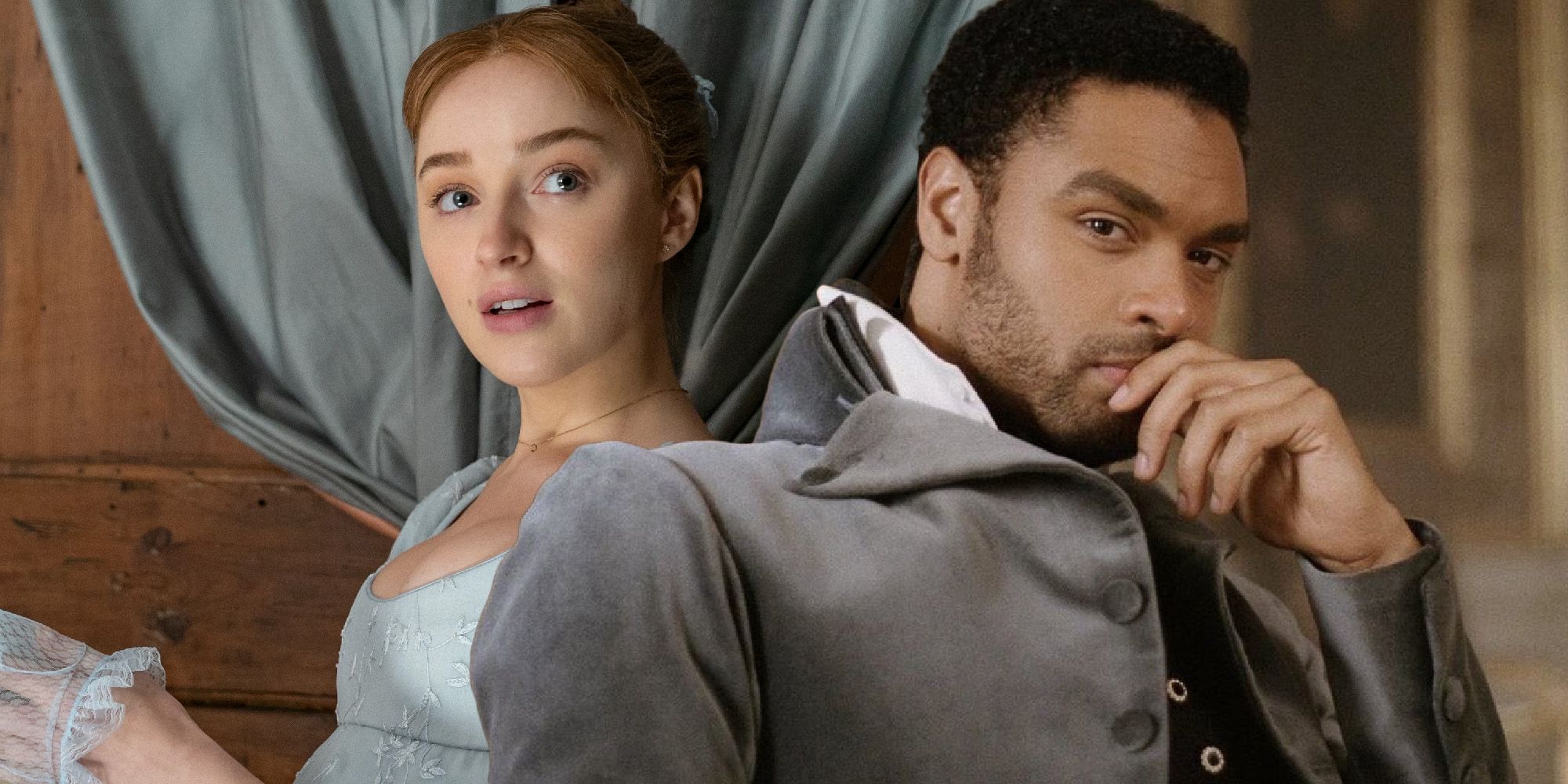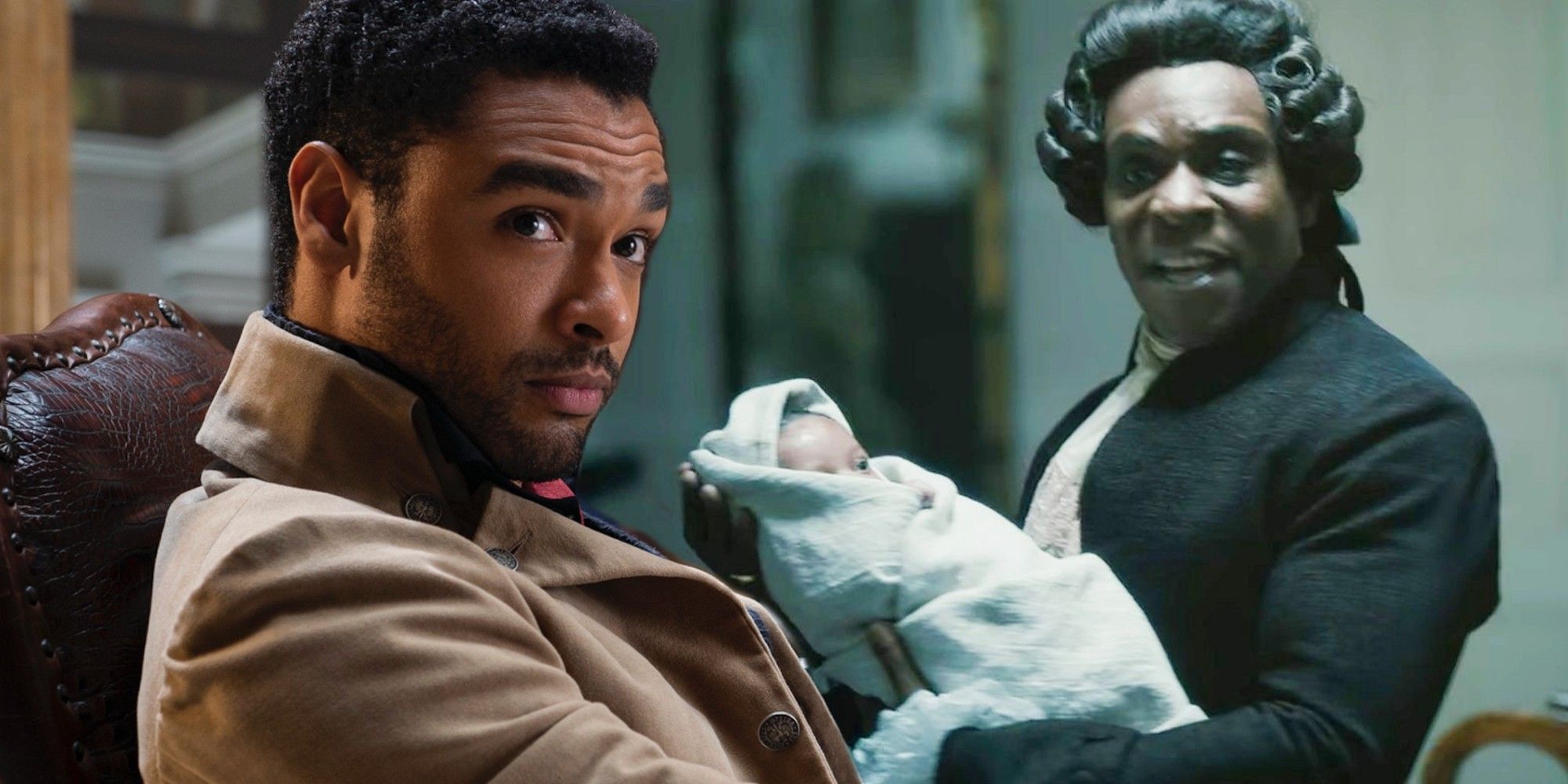Bridgerton: Why Hastings Insists That Daphne Call Him Simon

WARNING: Spoilers for Bridgerton season 1.
In Bridgerton, why does the Duke of Hastings (Regé-Jean Page) ask Daphne (Phoebe Dynevor) to call him by his real name, Simon? During episode 2, "Shock and Delight," the members of high society London agree to a romantic ruse that will impress gossip columnist Lady Whistledown, and thus make Daphne more appealing to potential suitors. For a more authentic public performance, the Duke of Hastings requests that his faux-girlfriend use his given name. It's a practical suggestion, but there's also a deeper meaning that connects to Simon's dark backstory.
After the death of Simon's estranged father, he reluctantly arrives in London in the Bridgerton season premiere to make the rounds. The Duke shows little interest in the pomp and circumstance of it all, but he does take a liking to Daphne. By the end of "Diamond of the First Water," the pair agree to a convenient courtship, with neither expressing genuine interest in any type of romance beyond that. Through a flashback sequence in the second episode, it's revealed that Simon was once rejected by his father because of an embarrassing stammer, which could negatively affect the family's reputation. As an adult, Simon tells his dying father that the Hastings name will end with him. And therein lies the underlying conflict as the Duke of Hastings' relationship with Daphne progressively becomes more intense (and sexual).
When the Duke of Hastings initially asks Daphne to call him Simon, it's out of respect for the stakes. Meaning, the Bridgerton darling makes it clear that she doesn't want to fool around, and that their courtship is no more than a "ruse." Daphne mostly wants to fend off undesirable suitors like Nigel Pembroke (Jamie Beamish), but she also wants to be taken seriously by her inner circle, and certainly by Lady Whistledown. So, during a ballroom dance moment in Bridgerton, the Duke of Hastings agrees to Daphne's demands. Beyond feigning intimacy, his request to be called Simon functions as a rejection of his past and the weight of his title. With Daphne, the Duke can be himself as Simon.

Simon slowly evolves as a man in Bridgerton season 1. At first, he wears all black - a recurring visual motif to underline his dark backstory and bleak perspective on life. Midway through, however, the Duke's clothing becomes more colorful as he grows strong feelings for Daphne. With her, Simon can temporarily ease the pressure of trying to please Lady Danbury (Adjoa Andoh), who helped him overcome his childhood stammer and transformed into a confident young man.
From Daphne's perspective, though, it's unclear what the Duke really wants, which makes their eventual romance and subsequent marriage so complicated during the final episodes of Bridgerton season 1. Simon takes advantage of his wife's naivete by perpetuating the lie that he's unable to physically have a son. But when Daphne eventually learns how sex and childbirth works - a true epiphany - she shifts the power dynamics of the relationship by taking advantage of Simon in the bedroom.
Bridgerton season 1 heavily focuses on the concepts of sexuality, identity, and legacy. At first, the Duke's request to be called Simon appears to be inconsequential, or at the very least shows that he can indeed act like a gentleman. From there, the show examines the push and pull of the Simon and Duke personas. The character wants to be a stoic "Man in Black" figure, someone who's destined to be alone. By initially embracing his true self as Simon, though, he shows a vulnerable side to Daphne, who then learns more and more about her husband's painful childhood, and why he believes that no one can truly "Simon," even if they do indeed love the "Duke" persona.
from ScreenRant - Feed https://ift.tt/2X48eek
via Whole story

Post a Comment